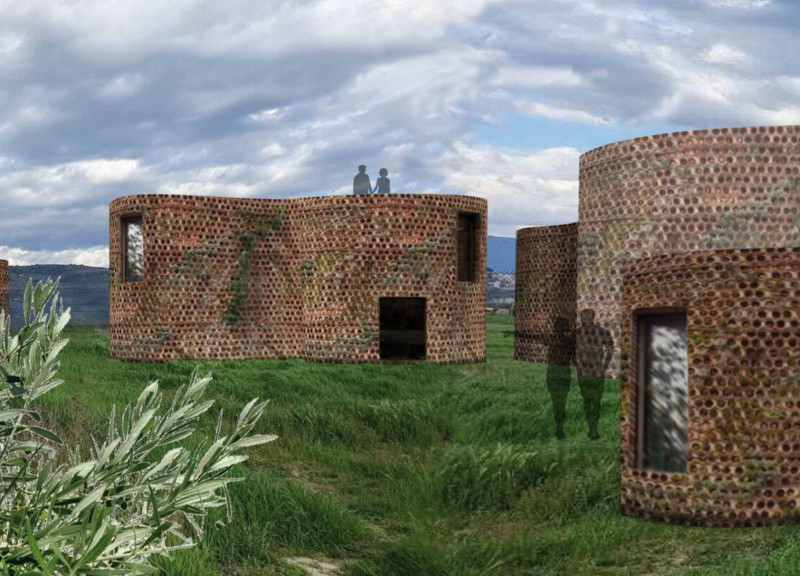5 key facts about this project
Cellae Vinaria is a modern interpretation of the traditional Roman cella vinaria, located in the scenic wine region of Tili, Italy. The project consists of several guest houses that integrate with the natural surroundings, creating a relationship between the built environment and the landscape. Its design focuses on community spaces while showcasing the beauty of the vineyards, encouraging visitors to connect with both the architecture and the local culture.
Design Concept
The design focuses on creating guest houses that are positioned to enhance the views of the surrounding vineyards. This arrangement forms a sculptural layout that enriches the experience for those visiting. A central plaza and garden filled with vines function as shared spaces, promoting interaction among guests. The concept draws on the original role of the cella vinaria as a gathering space, reinterpreting it for contemporary needs while emphasizing social engagement.
Materiality
Terracotta brick pipes featured on the facades serve both functional and aesthetic roles. These pipes allow for the growth of plants, creating an exterior that changes over seasons. The architecture takes advantage of light and shadow, giving the buildings a unique appearance at night when graphic patterns come to life. By integrating these elements, the design strives to connect with the environment in an ecologically thoughtful manner.
Form and Function
The guest houses are designed with a round shape that serves as a visual marker and provides flexibility for various events. This choice of form enhances the identity of the complex and encourages interaction among guests. The old main house remains intact, serving as a community center and location for wine tastings, thus linking the history of the area with modern needs.
Interior Design
The interiors utilize a glass-wood construction that invites natural light inside, fostering a strong connection with the outdoors. Floors made of recycled wood contribute to sustainability while ensuring a comfortable atmosphere. Terracotta bricks on the flooring offer both thermal benefits and a cohesive visual experience. Built-in furniture made from local wood highlights a commitment to craftsmanship, adding a layer of connection to the region.
As daylight changes, the play of light across the terracotta surfaces creates an ever-evolving experience, making the interaction with the architecture feel dynamic and engaging.





















































